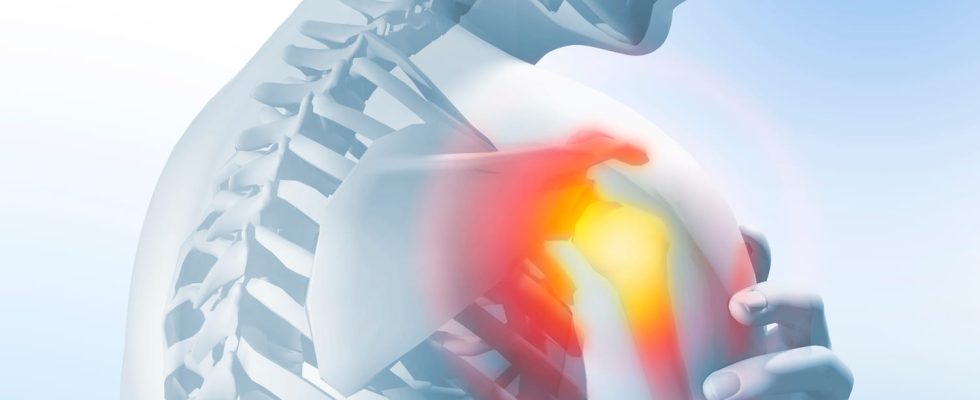Some diseases are said to be invisible: their symptoms cannot be seen from the outside, so they can be misunderstood or misunderstood. However, they are no less heavy to carry on a daily basis, and they each affect hundreds of thousands or even millions of people in France.
Often misunderstood, misunderstood or misperceived, diseases are said to be “invisible“. This means that their symptoms are not visible from the outside and that they are almost unsuspected and invisible to others. Their diagnosis is sometimes difficult to make and late. However, the evils are very real: these pathologies can be very serious physically and psychologically, and have a considerable impact on personal and professional life. Focus on 6 of them.
1. Fibromyalgia: a disease often confused with others
There fibromyalgia is a chronic condition, the origin of which is poorly understood. It was recognized as a “medical entity” by the WHO in 1992 and would affect 1.5 million people in France, particularly mid-life women. It is characterized by chronic pain in several parts of the body, which can be continual or evolve in spurts, often accompanied by fatigue and mood swings. Since the symptoms are difficult to categorize and the diagnosis complicated to make, the prevalence remains uncertain and certainly under estimated. It is also said that fibromyalgia is a disease that cannot be seen because clinical, radiological and biological examinations show nothing. Patients often receive first, a diagnosis of depression, spasmophilia, chronic fatigue syndrome or migraine. “HAS to date, there is no no organ damage or biomarkers biologics which make it possible to objectify a diagnosis of fibromyalgia. The criteria used are therefore symptom-based“, explains theInsermand on a diffuse pain score.
2. Sickle cell disease: no symptoms visible from the outside
In 2020 in France, 557 infants were born with sickle cell disease, an inherited blood disorder which affects hemoglobin, a protein found in red blood cells. She causessevere pain in the extremities of the limbs or in the abdomenanemia, increased fatigability and accelerated organ breakdown, which significantly reduces life expectancy of affected patients. “None of his symptoms are visible from the outside, so that (almost) all French people have been able to meet patients with sickle cell disease at school or at their workplace, without ever knowing it“, explains Pr Frédéric Galactéros, hematologist at the CHU Henri Mondor de Créteil in a brochure of the SOS Globi Federation, an association against sickle cell disease. Also, patients learn over time to internalize the pain and live with it. However, the painful crises can be of such intensity that a normal life cannot be possible.
3. Chronic Fatigue Syndrome: “Patients Don’t Look Bad”
Chronic fatigue syndrome (CFS or myalgic encephalomyelitis), the mechanisms of which are still very poorly understood, would affect between 130,000 and 270,000 people, mostly womenreports theInserm. Patients who suffer from it do not seem to be doing badly, because the disease is characterized by thealternating bursts of energy and periods characterized by “crushing fatigue who is not relieved by rest, constant exhaustion which leads to giving up all activity, a feeling of having the brain constantly idling, and bedridden discomfort“. It suddenly appears in a previously healthy and non-depressed person, no particular cause can be found. “There is currently no treatment to help patients who must learn to live with their illness, in particular to manage their energy to avoid post-exercise discomfort“, specifies Inserm.
4. Polycystic ovary syndrome (PCOS): signs not always noticeable
Polycystic ovary syndrome (PCOS) is the most common hormonal disease in women of childbearing age : 1 in 10 women would be affected according to’Inserm. It is characterized by ovulation disorders which translate into irregular cycles and an increased risk of infertility, manifestations that the outside cannot perceive. However, some women have noticeable signs such as hyper-hairiness on unusual areas such as the chin, chest or back, acne and hair loss. The origin of the hormonal imbalance leading to PCOS is not clearly identified and would be probably multifactorial : genetics, epigenetics and environmental. The treatment is only symptomatic.
5. Crohn’s disease: totally unpredictable outbreaks
More than 120,000 people suffer from Crohn’s disease in France, the cause of which remains unknown to date, reports the Learned Society for Diseases and Cancers of the Digestive System (SNFGE). It’s a pathology chronic inflammatory bowel disease that can affect the entire digestive tract. It causes diarrhea and abdominal pain, which often progress through phases of activity called totally unpredictable “pushes” and very variable in intensity, interspersed with periods of remission what causes the disease to be considered as “unseen”. Patients can also hide from others that they are suffering physically. However, the impact of this disease on quality of life can be considerable.
6. Endometriosis: the disease sometimes goes unnoticed
Endometriosis is an inflammatory and chronic gynecological disease that concerns 1 in 10 menstruating women (i.e. 2 million women in Francea figure certainly underestimated), according to EndoFrance. Affected women have endometrial tissue (which normally lines their uterus) growing outside the uterine cavity, causing pelvic pain, more important at the time of menstruation, and fertility problems. In some women, the disease goes unnoticed, particularly in adolescence. In others, it is painless but has important consequences for fertility. Or, it is extremely debilitating and can have consequences on social and professional life. It is a complex disease that is difficult to diagnose : endometriotic lesions can be difficult to see during imaging, which often leads to medical wandering and long periods of examinations to detect this disease.
